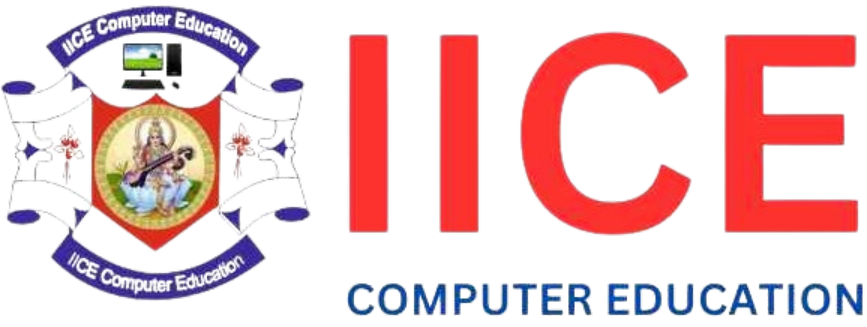
The Art and Science of Stenography: A Guide to Shorthand Writing , which is often associated with courtrooms or the legal process, can be more than a traditional method of writing swiftly. It is a form of scientific art that brings together speed accuracy, precision, and a profound understanding of the structure of language to allow people to record spoken words nearly in real-time. This highly-specialized skill has grown over time and has become a vital tool for a wide range of fields, from legal to journalism, medical transcription and much more. This blog we’ll look into the background and techniques, the applications and the future possibilities of stenography. We’ll also look at the reasons it is still thriving in the age of digital.
What is Stenography?
Stenography refers to the act that involves writing shorthand with symbols or abbreviations to capture spoken words fast and effectively. The objective is to transcribe speech at speeds that are usually more efficient than traditional typewriters or handwriting. Stenographers make use of specialized equipment, such as stenotype machines or, in certain instances pen and paper, to record conversations in real-time. This allows for precise and immediate transcription that is essential in many professional environments.
Shorthand techniques have been around throughout history, today’s current method of stenography we’re used to today revolves around the stenotype machine. They are equipped with a keyboard that can represent different sounds, syllables, and words, which allows a stenographer to use multiple keys simultaneously to record the sounds in a short time.
The History and Evolution of Stenography
The origins of stenography can be traced to the ancient times in which shorthand was developed to aid communication and record-keeping. One of the first examples is the Greek system of “Tironian notes,” a type of shorthand developed by Marcus Tullius Tiro, a slave of Cicero in the first century BCE. The method was later utilized by the Romans for recording speeches as well as legal issues.
Through the years shorthand developed into an efficient method of transcribing court proceedings, debates in parliament and speeches. The 19th century saw shorthand was more standardized, with a variety of inventors and stenographers creating standard techniques. Stenotype was the first device in the beginning of the 20th century revolutionized the process, allowing the stenographers to record spoken words more effectively.
In the current era the field of stenography has experienced constant advancement with the advent of digital technology. Today’s stenographers come with modern equipment and software that offer real-time transcription. They also integrate seamlessly with court reporting software and closed captioning.

How Does Stenography Work?
Stenography is based on a variety of methods that can improve the speed and precision of transcription. The most popular method is making use of the stenotype device**. Its keyboard is comprised of less keys than a conventional typewriter or a keyboard for computers. Instead of typing single letters, stenographers press several keys at the same time to signify sounds, syllables or even complete words.
The most important concept in stenography is”phonetic transcription. Instead of writing every word in full, stenographers focus on recording the sounds of speech, usually using abbreviations, or combinations of sounds that the machine is able to effectively record. The stenographers are able to achieve speeds of 250 word per minute, or more.
For example, instead writing “Hello,” a stenographer might press a set of keys to are sound patterns such as “h,” “l,” and “o.” As time passes stenographers get better in recognizing and transcribing most frequently used phrases and words, dramatically improving its speed as well as accuracy.
Stenography in Practice: Real-World Applications
http://StenographyStenography can be used for a variety of uses across a variety of industries. Below, we will look at some of the most prominent areas where stenographers play a crucial function.
Court Reporting and Legal Transcription
Perhaps the most well-known usage of stenography can be found in the area of “court reporting”**. Court reporters utilize stenography to record accurate details of legal proceedings that are in real-time. This involves recording all the words spoken during trials, hearings depositions, hearings and other legal proceedings. These transcripts then become official documents and are usually utilized as evidence in later legal instances.
Stenographers in courtrooms have to be extremely skilled, since they must translate complex technical and legal terms with speed and accuracy. Court reporting is not just about technical skills, but also a grasp of legal terminology as well as the ability to deal with difficult acoustics as well as overlapping speech.
Closed Captioning and Broadcast Transcription
Another area that is gaining popularity for stenographers are closed captioning on video and television. Real-time captioning is crucial to make content accessible to people who have hearing impairments. Stenographers employ special software to create precise captions that are synced with the audio from the software.
Live broadcasts like news programs and sports events that are live or debates, stenographers have to translate the dialogue and conversation in a matter of minutes. This requires intense concentration, accuracy and speed as any delay could disrupt the viewers dependent on captions.
Medical Transcription
Stenography is also used in the medical industry, where accuracy and speedy transcription of medical records is essential. The transcriptionists or stenographers convert the notes that are dictated by medical professionals and doctors into written documents that are used for patient documents, insurance purposes and other legal documents. While the use of voice recognition software is increasingly popular in medical practice however, the accuracy and reliability of stenography remain needed for the use of medical terminology.
Journalism and Broadcast Reporting
In the field of journalism, particularly when live events are being broadcast the stenographers are able to assist by making real-time transcriptions available to anchors, reporters, or other journalists. This can include transcription of press conferences, speeches and other events that are public. Journalists are benefited by the ability of stenographers to create rapid reports in a matter of minutes and ensure that no important information is left out.
Corporate and Educational Settings
Many major universities and organizations employ stenographers to offer transcription services at conferences, meetings or lectures. This guarantees that important discussions and decisions are precisely recorded and accessible in the future. In addition, stenographers are typically involved in the provision of accessibility services to people with hearing impairments in these environments.
Advantages of Stenography
Stenography is still thriving even in the age of AI and digital voice transcription systems due to a variety of reasons.
Speed and Accuracy
Stenographers can translate spoken words faster than conventional typing, usually with speeds of up to 200 words per minute. This makes it a great method to capture quick-paced conversations or events in real-time.
Reliability
While digital transcription tools are advancing their accuracy, stenography provides unbeatable accuracy and reliability. Stenographers who are human can guarantee that the language of technical complexity is correctly transcribed and accurately, a task that automated systems have a hard time with.
Confidentiality and Security
For sensitive information like medical records or legal proceedings Stenography can be a safer alternative to transcription using digital technology. Digital transcription tools are susceptible to data breaches and hacking while stenographers provide confidential and secure transcription services.
Flexibility
Stenographers be employed in a variety of situations, including courts, live broadcasts doctors’ offices or at corporate meetings. This flexibility makes stenography a important skill in a variety of sectors.
The Future of Stenography
With the development of AI-powered voice recognition technology and transcription tools, people may be wondering if stenography is actually in decline. But the truth is that stenography isn’t outdated. While tools for voice recognition are able to handle simple task of transcription, they struggle with specialized or complex languages and are susceptible to mistakes when working in noisy settings. Human stenographers, due to their ability to differentiate subtle differences in speech, offer an additional layer of security and precision that machines can’t duplicate.
Furthermore, stenography is evolving. Modern stenographers are incorporating sophisticated software tools to increase their effectiveness. For instance, software that converts text into speechand real-time translation tools are becoming more popular when used in conjunction with stenotype machines which create a more effective transcription workflow. In addition, the demand for live captioning for streaming videos, online platforms and even virtual events is continuing to increase, resulting in that there is a constant demand for experienced stenographers.
Conclusion
Stenography is a vital ability in a variety of fields, from medical and legal fields to corporate and media settings. The ability to transcribing speech accurately and quickly is a dependable instrument for documenting in real-time and bridging the gap between written and spoken documents. As technology continues to improve, stenographers are discovering new ways to improve their skills, making sure that the art and science behind the stenography field will flourish over the next few years.
If you’re thinking about an upcoming career in stenography or are just trying to grasp its importance in the present there is one thing that is certain that the ability to capture speech with lightning speed is an ability that will always be in high demand.
